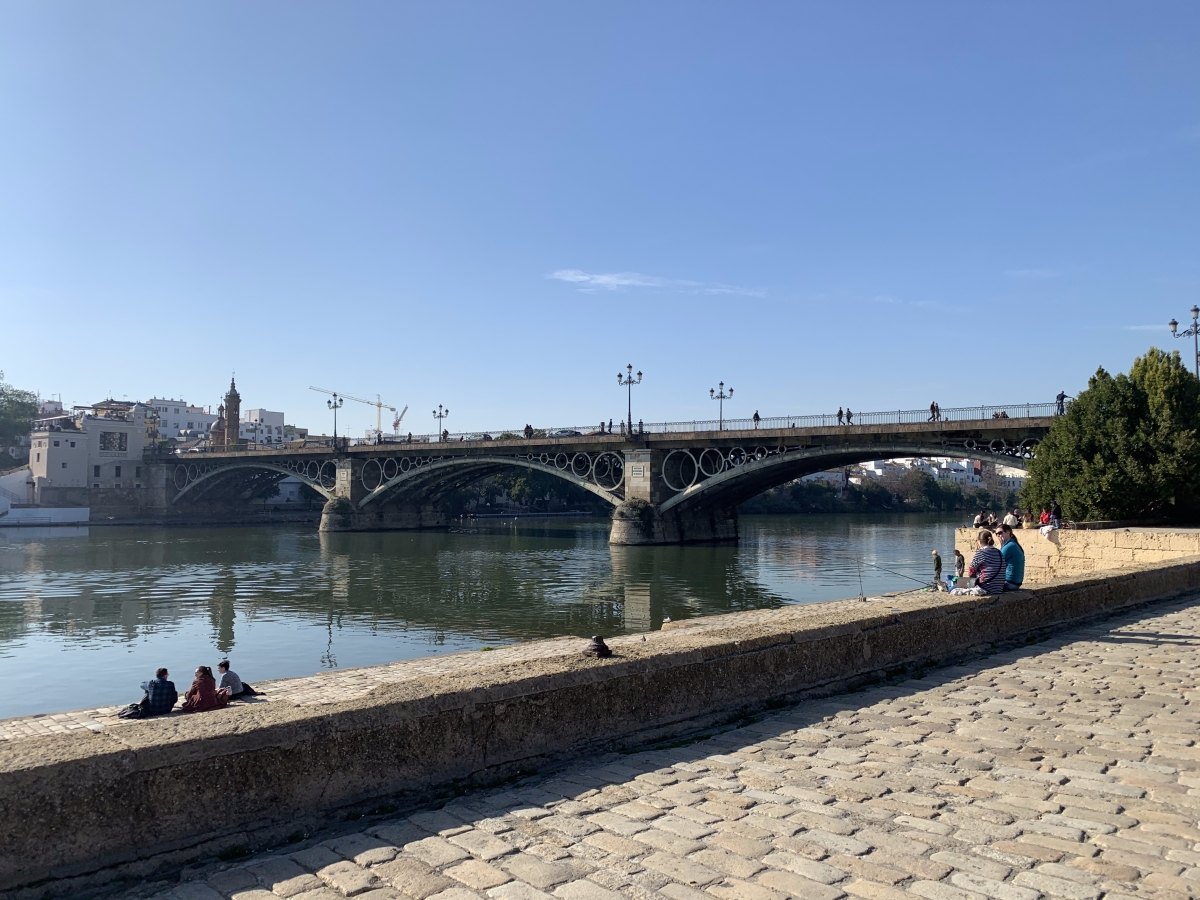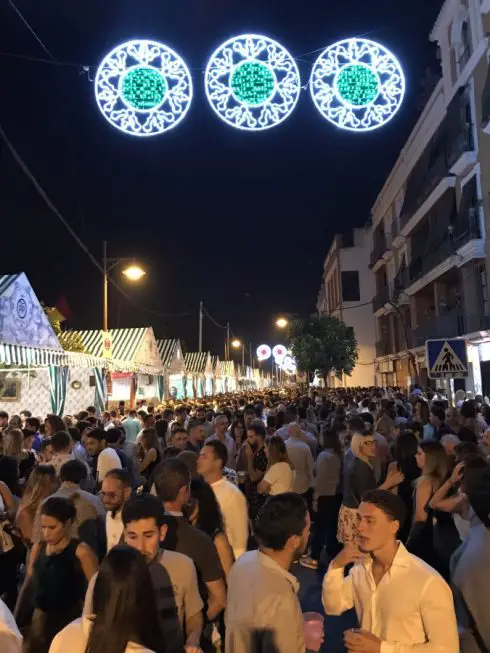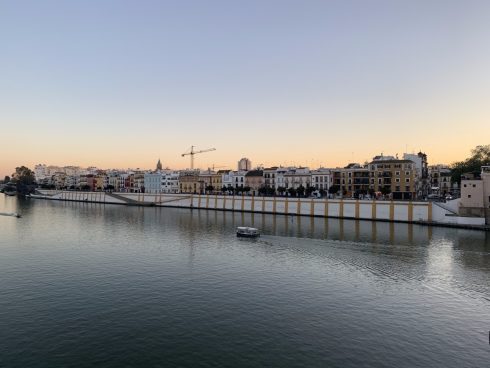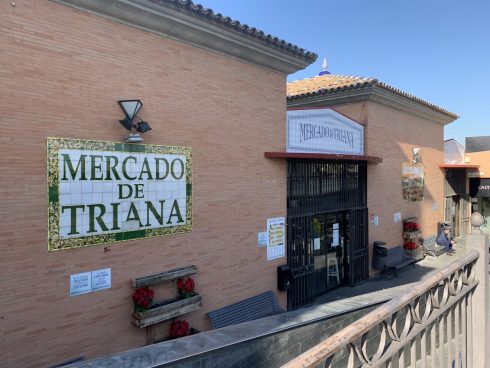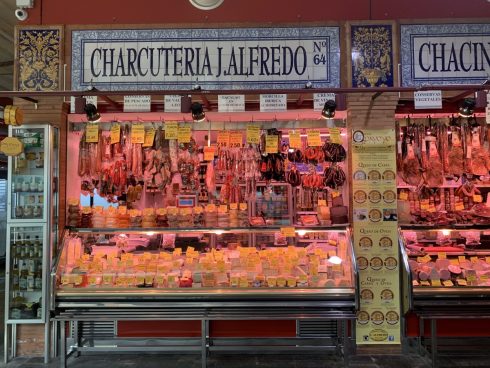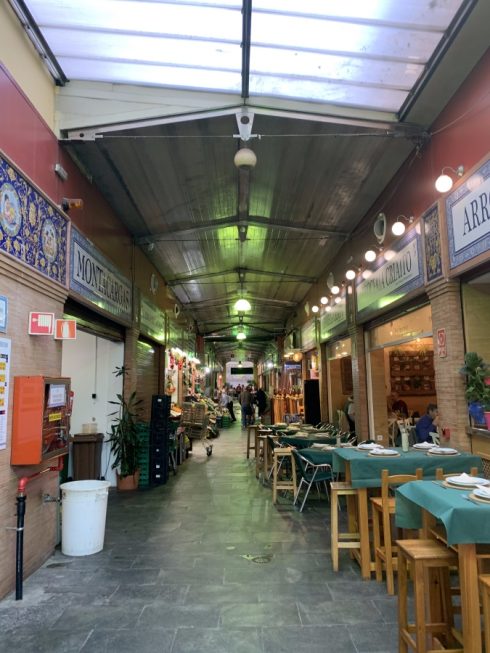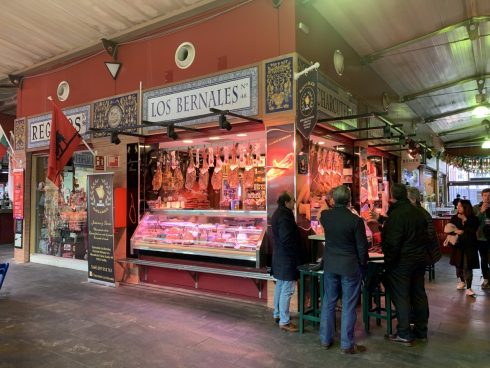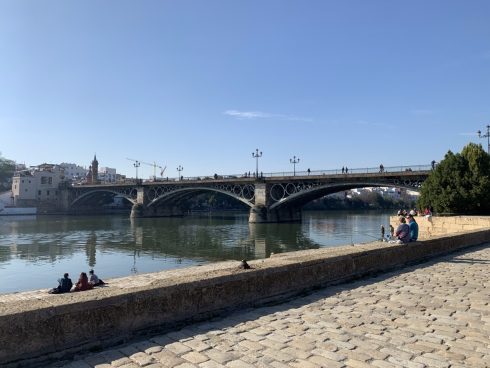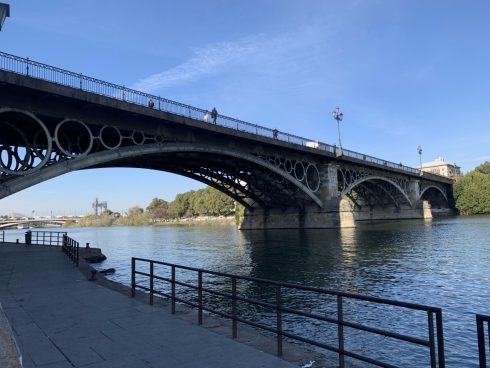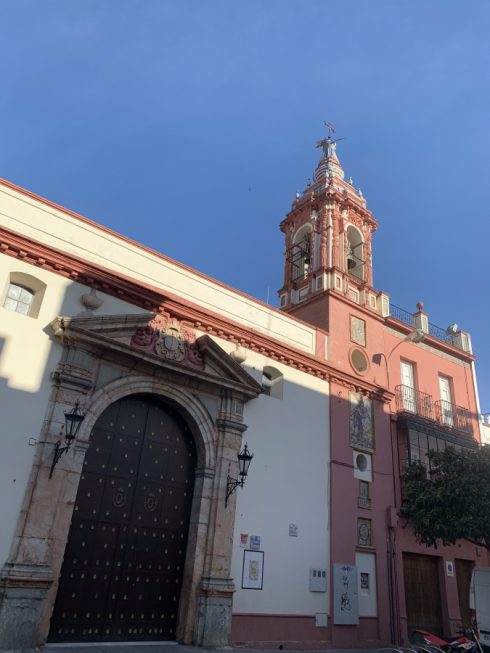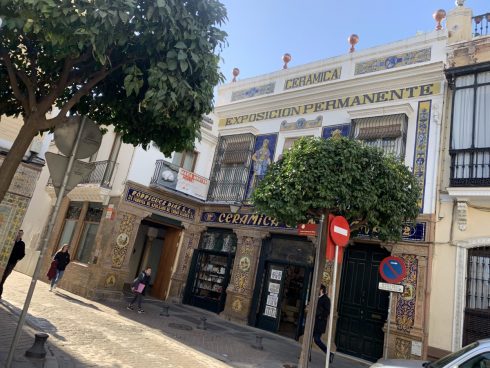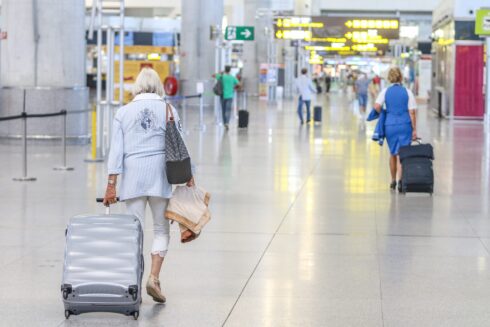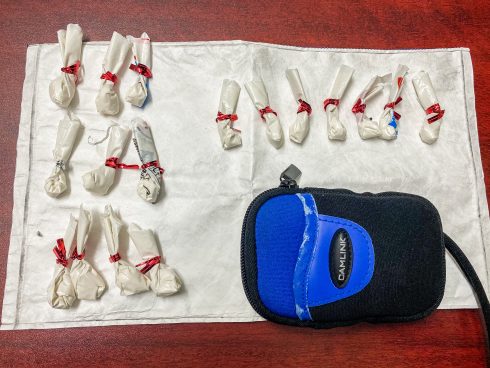ONCE home to sailors, potters, Flamenco dancers and bull-fighters, Triana’s rich history is as colourful as its buildings which light up the river bank on its iconic Calle Betis.
The barrio was once known as an arrabal, the name given to areas separated from the centre of Sevilla. And many in the town still see themselves as strictly trianero and distinct from the rest of the Sevillanos, often referring to the neighbourhood as the Independent Republic of Triana.
Believed to have been founded by a Roman colony under emperor Trajan, it is entered by crossing the Isabel II bridge, a landmark in itself.
It’s home to a traditional pottery and tile industry – with a museum paying homage to the crafts – vibrant flamenco festivals and hugely popular markets and festivals.
Whether it’s enjoying a rooftop lunch with stunning views, enjoying a riverside walk or taking in the many cultural sites, a trip to Triana is a must when in Sevilla.
Calle Betis
This riverside street is the most emblematic of Triana, filled with bright pastel exteriors, restaurants and bars.
But the best time to visit is between July 21 and 26, when Vela Santana (Saint Anne’s evenings) is celebrated. It is the most important festival for the neighbourhood (after the Feria de Abril), dating back to the 1200s. It sees the street filled with pop-up tapas and drink stalls as residents sip on sherry wine, chow down roasted sardines and perform the traditional Sevillanas dance.
Esperanza de Triana
It’s one of the most-loved Virgin Marys in Sevilla, with locals flocking to her daily at the Capilla de los Marineros on Calle Pureza. The statue belongs to the Hermandad de la Esperanza de Triana (Brotherhood of Hope Triana), one of the city’s oldest and most influential brotherhoods, having been created in 1418.
Castillo de San Jorge
Once a huge medieval fortress, the San Jorge castle was used as headquarters and a prison for the Spanish inquisition. Unfortunately it was demolished in the 1800s and is now home to the Triana market (see below). However, a museum in the underground ruins gives a fascinating history of the castle, the inquisition and religious repression.
Mercado de Triana
In the place of the medieval Castillo de San Jorge sits Triana’s food market. Here you will feel like a real local, with fruit and veg stalls and jamon and cheese stands selling the highest quality products.
There are also several fantastic little tapas bars and cafes which are perfect for a quick bite.
Puente de Isabel II
First built as a pontoon bridge in 1171, the Isabel II bridge reconstructed to what is today in 1845.
Offering stunning views of the Guadalquivir river, the landmark was declared a National Historic Monument in 1976 and remains a hugely important artefact of Sevillan history.
Also known as Puente Triana (Triana Bridge), it was built on the remains of the former San Jorge castle, which was the last headquarters of the Inquisition in Sevilla.
You will often see people basking in the sun on the pathway below while keen rowers or kayakers glide underneath the bridge.
Nuestra Señora de la O and Santa Ana
These two churches are worth a visit and sit on opposite sides of the Isabel II bridge.
Accessed by the Paseo Nuestra de la O, the church of the same name was first founded in 1418 and has been home to many different brotherhoods over the centuries before it was reconstructed in 1702.
Santa Ana is a Gothic-Mudejar church which has been declared an official site of cultural interest. Popularly known as the Triana Cathedral, it was built back in the 13th century under the orders of King Alfonso X. The temple had to be rebuilt at the end of the 14th century after it was damaged by the 1356 earthquake.
Ceramic and tile museum
In Triana’s old town you will find a selection of ceramic shops while on Calle Callao there is a museum dedicated to telling the history of the art.
In Triana’s old town you will find a selection of ceramic shops while on Calle Callao there is a museum dedicated to telling the history of the art.
READ MORE:
- Sevilla: Guide to visiting Spain’s most romantic city
- Visit our travel guide section for more about Sevilla
Click here to read more Olive Press Travel News from The Olive Press.

